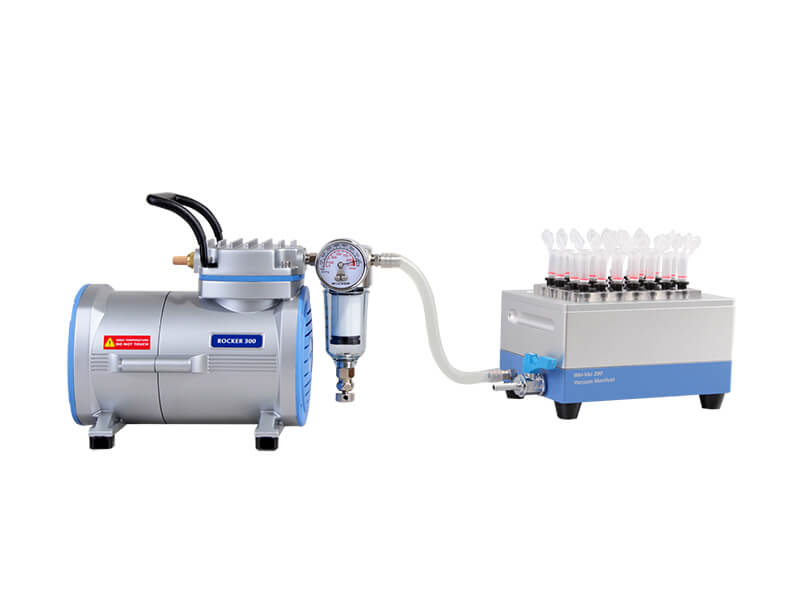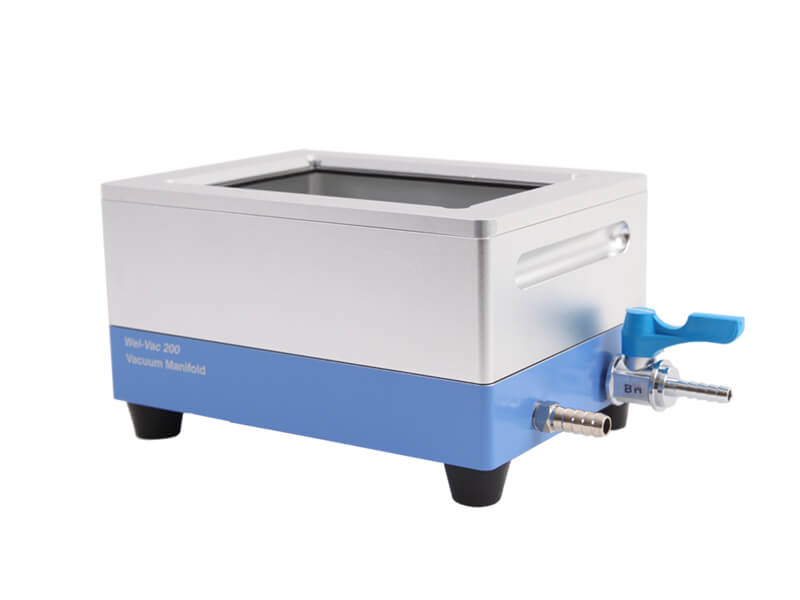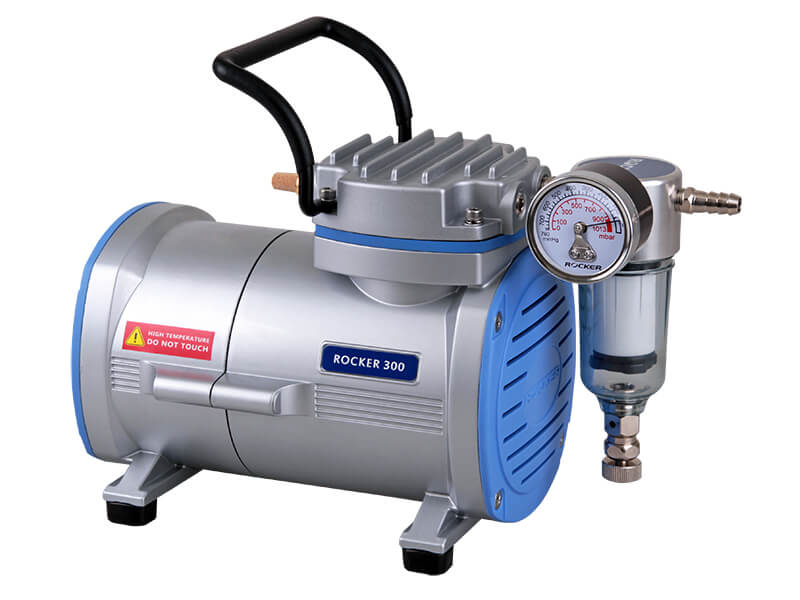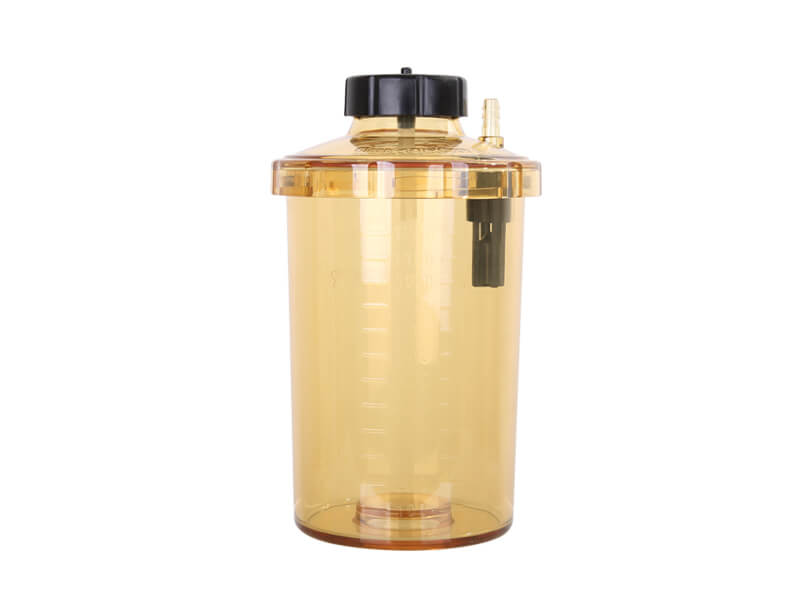Nucleic acid extraction is a fundamental process in molecular biology and genetics that enables the isolation and purification of DNA or RNA from various biological samples. This topic holds immense significance as it forms the basis for a wide range of applications, including genetic research, diagnostic testing, forensics, and biotechnology.
What’s nucleic acid extraction?
Process and method of nucleic acid extraction
Best solution to extract big number of samples
Extracting nucleic acid with SPE via vacuum
Common applications of nucleic acid extraction
What is nucleic acid extraction?
Nucleic acid extraction, also known as nucleic acid isolation or nucleic acid purification, is an essential technique in molecular biology and a crucial step in successful molecular diagnostics. This nucleic acid extraction technique allows for the separation, purification, and concentration of nucleic acids, including DNA and RNA molecules, from various samples.
The fundamental principle of nucleic acid extraction involves breaking down the structure of sample cells, such as the nucleus, cell membrane, nuclear membrane, or cell wall, either physically or chemically, to release the nucleic acid molecules. Subsequently, these released molecules are purified and concentrated to obtain high-purity nucleic acid samples.
The extracted nucleic acid molecules serve as valuable resources for a wide range of downstream applications, including polymerase chain reaction (PCR), quantitative PCR, gene sequencing, and the southern blot method. Moreover, nucleic acid extraction has found practical applications in clinical virus diagnosis and microbial detection, such as the detection of novel coronaviruses and sepsis diagnosis.
Nucleic Acid Extraction steps
Nucleic acid extraction steps can be summarized as follows:
-
-
Cell disruption or lysis:
The lysis buffer and/or heat are used to destroy structures that contain genetic material, such as the cell membrane and nuclear envelope. The lysate usually contains SDS, as well as enzymes (e.g., Proteinase K), a chelating agent (EDTA), or Tris buffer, which can be added based on the characteristics of the target sample. -
Separation and purification:
The impurities, such as lipids and proteins, are removed from the cell lysates. -
Concentration and precipitation:
After the preliminary purification, there will still be some impurities. Therefore, precipitation methods, such as alcohol precipitation, can be applied to further purify and concentrate nucleic acid molecules, resulting in higher concentrated nucleic acid molecules.
-
There is a diversity of nucleic acid extraction methods. The table below lists several common extraction methods, comparing their target molecule, downstream application, and throughput.
|
|
Method |
Target molecule |
Advantage |
Limitation |
|
Chemical method |
Phenol-Chloroform Extraction |
DNA、RNA |
• Higher purity of nucleic acid |
• Phenol is toxic |
|
Alkaline Extraction |
Plasmid DNA |
• Quicker |
• Lower molecule purity |
|
|
CsCl / EtBr Gradient Centrifugation Method with EtBr |
• Bacterial DNA |
• Higher purity of nucleic acid |
• Very costly equipment is required |
|
|
Solid-phase extraction |
Silica-based Extraction |
DNA、RNA |
• High affinity and specificity to nucleic acids |
Inability to efficiently recover small nucleic acid molecules |
|
Magnetic Beads Extraction |
Chromosomal DNA, plastid DNA, mitochondrial DNA, RNA |
• Quicker |
• Less cost-effective |
Best solution for extracting big number of samples
Solid-phase Extraction (SPE) is an efficient nucleic acid extraction method with several advantages. It can acquire high-purity, high-concentration, and high-yield nucleic acid molecules, process both trace samples and a large number of samples. The extracted nucleic acid molecules are suitable for many downstream applications.
To meet the demand for processing a large number of samples, various commercial nucleic acid extraction and detection kits are available on the market. Among them, the most commonly used method involves the use of a spin column or a 96-well microplate. This method is also known as Silica-based Extraction since most of these products utilize silica as a solid-phase material.
The basic procedure for isolating nucleic acid molecules through SPE is as follows:
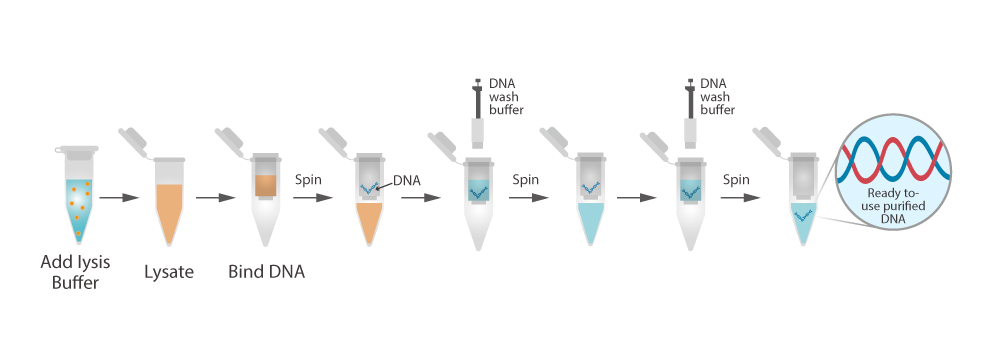
-
Cell lysis: Add a lysis buffer to the sample cells to destroy the cell membrane and other structures.
-
Nucleic acid binding (or adsorption): Bind the nucleic acid molecules to the solid phase material, allowing other molecules to pass through the column and be collected in a centrifuge tube for disposal.
-
Washing: Use a wash buffer to remove impurities and interferences.
-
Elution: Use an elution buffer, such as a hyposmotic solution like water, TE buffer, or Tris buffer, to flush the nucleic acid molecules bound to the solid phase material and collect them in a centrifuge tube.
During this procedure, each step requires high-speed centrifugation to accelerate the flow through the solid phase material. However, the repetitive process of removing tubes, discarding liquid, replacing tubes, and adding reagents can be tedious and time-consuming.
Extracting nucleic acid with SPE via vacuum
|
|
Centrifuge |
Vacuum |
|
Equipment |
Centrifugal machine |
Microplate vacuum manifold |
|
Parameter |
Time and rotation speed |
Vacuum |
|
Number of sample |
Based on the capacity of centrifuge’s rotor |
Max. 96 at once, with 96-well microplate |
|
Visibility |
Only after the centrifuge processing is done. |
Anytime. |
|
Reagent adding |
Only before entering the centrifuge. |
Anytime. |
|
Liquid removal |
Tube by tube. |
Liquids are collected in one plate or bottle, clean once only after the whole procedure. |
|
Maintenance |
More difficult due to its complicated structure. |
Much easier. |
|
Processing time |
Longer |
Shorter |
|
Weight |
Heavier |
Lighter with higher mobility. |
|
Other |
Weight allocation should be carefully balanced. |
Recommended to add a waste bottle to collect liquid wastes. |
Simplifying the operation, the purification process of various nucleic acids such as plasmid DNA, ssDNA, RNA, genomic DNA, and viral nucleic acids can be made easier by replacing traditional centrifuges with a vacuum source.
Improved efficiency: The WelVac vacuum manifold enables rapid and continuous sample purification, eliminating the need for repetitive centrifugation steps.
Multi-use of one machine: The WelVac 200 is highly versatile, thanks to its uniquely designed column adapter board and luer connector, allowing compatibility with different types of spin columns and 96-well microplates.
WelVac 200 Microplate Vacuum Manifold
WelVac 210 Microplate Filtration System (with pump)
WelVac 210 Microplate Filtration System
Common applications of nuclei acid extraction
- Molecular biology research: gene expression and regulation, gene mutation
- Genetics research: genotyping, gene mapping, gene mutation detection, paternity testing
- Disease diagnosis: cancer detection, virus detection, genetic disease detection, single nucleotide polytype detection
- Biological Research: Species Identification
- Criminal identification: DNA comparison of fingerprints, mucous membranes, body fluids, etc.
References:
- Chapter 7 – DNA extraction: finding the most suitable method, Molecular Microbial Diagnostic Methods, 2016
- Current Nucleic Acid Extraction Methods and Their Implications to Point-of-Care Diagnostics-Review Article, Hindawi BioMed Research International, 2017
- Nucleic Acids: A Guide to Spin Column Purification, BioEcho Life Sciences, 2022
- The Evolution of DNA Extraction Methods, American Journal of Biomedical Science & Research, 2020
- Overview of DNA Extraction Methods, AAT Bioquest


